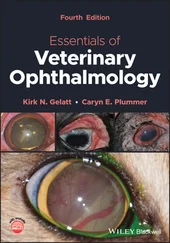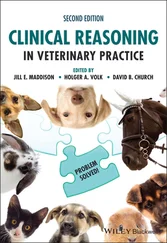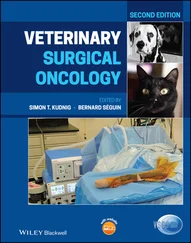Clive Elwood - Leadership in Veterinary Medicine
Здесь есть возможность читать онлайн «Clive Elwood - Leadership in Veterinary Medicine» — ознакомительный отрывок электронной книги совершенно бесплатно, а после прочтения отрывка купить полную версию. В некоторых случаях можно слушать аудио, скачать через торрент в формате fb2 и присутствует краткое содержание. Жанр: unrecognised, на английском языке. Описание произведения, (предисловие) а так же отзывы посетителей доступны на портале библиотеки ЛибКат.
- Название:Leadership in Veterinary Medicine
- Автор:
- Жанр:
- Год:неизвестен
- ISBN:нет данных
- Рейтинг книги:4 / 5. Голосов: 1
-
Избранное:Добавить в избранное
- Отзывы:
-
Ваша оценка:
- 80
- 1
- 2
- 3
- 4
- 5
Leadership in Veterinary Medicine: краткое содержание, описание и аннотация
Предлагаем к чтению аннотацию, описание, краткое содержание или предисловие (зависит от того, что написал сам автор книги «Leadership in Veterinary Medicine»). Если вы не нашли необходимую информацию о книге — напишите в комментариях, мы постараемся отыскать её.
Leadership in Veterinary Medicine
Leadership in Veterinary Medicine
Leadership in Veterinary Medicine — читать онлайн ознакомительный отрывок
Ниже представлен текст книги, разбитый по страницам. Система сохранения места последней прочитанной страницы, позволяет с удобством читать онлайн бесплатно книгу «Leadership in Veterinary Medicine», без необходимости каждый раз заново искать на чём Вы остановились. Поставьте закладку, и сможете в любой момент перейти на страницу, на которой закончили чтение.
Интервал:
Закладка:
The use of role models and their stories to inspire and encourage others into leadership is powerful, e.g. the RCVS' Inspiring Veterinary Leaders initiative. In the book Leaders of the Pack the authors share the leadership narratives of exemplary female veterinarians from a wide range of spheres including public health, education, and shelter medicine; this is an unusual and useful text where the focus is the varied and powerful personal stories (Kumble and Smith 2017). Focussing on the personal narrative emphasises that leadership is experienced individually, in a social context, and that no one point of view is ‘better’.
Compared to the vast literature on leadership, there is currently a very sparse evidence base for ‘leadership‐followership’, or other conceptions of collective leadership ( Chapters 5and 11) in a veterinary context. As the few studies show, leadership in veterinary medicine is a rich area for master's‐level teaching and research, with many intriguing questions to ask.
2.12 The Future of Leadership in Veterinary Medicine
There is cause for optimism. There is movement and the veterinary professions have shown that they have great capacity to look forward, adapt, and survive. In recent years, for example, the political leadership of the veterinary professions has become much more diverse and can be held as an example to other professions and organisations. There are positives and negatives to the consolidation of veterinary business, but we can see that larger organisations have the power and will to consider leadership as a ‘business critical’ activity and invest in leadership development accordingly. As a result, the professions are taking leadership and its associated challenges seriously. There are many inspiring women and men who exemplify good leadership and who will help drive continued change so that veterinary professions remain relevant, accessible to all, effective and continue to punch above their weight.
Looking back at the last 30 years, Charlie could not believe how far the journey had taken her. If you had told her at 17, as a student veterinary nurse, that she would have ended up leading a project to bring holographic consulting into veterinary practices across the globe, including some very remote areas, she would never have believed it. She appreciated how lucky she was to have encouragement, support, and mentorship at every level, alongside some excellent training, as she moved from student to nurse, to head nurse, to district management and (via a masters' degree sponsored by the company) to head of Digital Innovation. She was incredibly grateful for the opportunities but also recognised that the drive, hard work, openness to learning, and willingness to lead were all her own.
2.13 Conclusion
The veterinary professions have developed to serve the (often‐conflicting) needs of animals and human society. The right of veterinary professionals to practise is enshrined in law, and this contains and protects society from the conscious and unconscious anxieties arising from their relationship with animals. The landscape of this relationship is constantly changing, and, at different times, different societal needs dominate, e.g. from the basic needs of food supply to security and safety on to the need for love and companionship, even though the essential paradoxes of human–animal interaction may remain. In modern Western society, dominant anxieties include ageing, pain, death, and loneliness, and it is in this context that a changing relationship with our animal companions and an increasing emphasis on palliation and geriatric medicine might be considered inevitable.
The veterinary professions exist in a complex open system that cannot be simplified. Accepting the consequences of this and respecting the fact that each of us will have our own construction of our role and identity, which helps us negotiate the inevitable paradoxes, might reduce the righteous indignation that abounds when we find we cannot gain consensus on the difficult issues of our time.
As societal needs change, so the veterinary professions must adapt. There is increasing recognition that leadership is an essential professional skill and that, across the professions, we will always need accomplished leadership that reads and anticipates the need for change and that take us into the future with our selves intact so we can continue to serve those in our care.
Questions
1 What does ‘being professional’ mean to you? Why might it be different for someone else?
2 The veterinary professions are generally considered to be highly trusted by the general public. Why might that be? What would be the consequence if that trust was lost?
3 What do you say you do? What do you really think you do? What do you actually do? Think about how you might find answers to those questions.
4 Who are your veterinary leadership role models? What is it about them that makes an impact on you?
Further Reading
1 Kumble, J. and Smith, D. (2017). Leaders of the Pack: Women and the Future of Veterinary Medicine. West Lafayette, Indiana: Purdue University Press.
2 Meadows, D.H. and Wright, D. (2009). Thinking in systems: a primer. London: Earthscan.
3 Perrewe, P.L., Rosen, C.C., and Clerkin, C. (2016). The Role of Leadership in Occupational Stress, Research in Occupational Stress and Well Being. Bingley, UK: Emerald Group Publishing Limited.
References
1 Adler, P.S., Kwon, S.W., and Heckscher, C. (2008). Professional work: the emergence of collaborative community. Organization Science 19 (2): 359–376. https://doi.org/10.1287/orsc.1070.0293.
2 Armitage‐Chan, E. and May, S.A. (2018). Identity, environment and mental wellbeing in the veterinary profession. Veterinary Record. British Veterinary Association 183 (2): 68. https://doi.org/10.1136/vr.104724.
3 Armstrong, D. and Rustin, M. (2014). Social Defences Against Anxiety : Explorations in a Paradigm, The Tavistock Clinic Series. London: Routledge.
4 Arnold, K.A., Turner, N., Barling, J. et al. (2007). Transformational leadership and psychological well‐being: the mediating role of meaningful work. Journal of Occupational Health Psychology 12 (3): 193–203. https://doi.org/10.1037/1076‐8998.12.3.193.
5 Bloom, N., Genakos, C., Sadun, R. et al. (2012). Management practices across firms and countries. Academy of Management Perspectives 26 (1): 12–33. https://doi.org/10.5465/amp.2011.0077.
6 British Veterinary Association. (2019). BVA policy position on the Vet‐led Team.
7 Broekema, W., van Kleef, D., and Steen, T. (2017). What factors drive organizational learning from crisis? Insights from the Dutch Food Safety Services’ response to four veterinary crises. Journal of Contingencies and Crisis Management 25 (4): 326–340. https://doi.org/10.1111/1468‐5973.12161.
8 Bryman, A. (2007). Effective leadership in higher education: a literature review. Studies in Higher Education 32 (6): 693–710. https://doi.org/10.1080/03075070701685114.
9 Cleland, J.A., Patterson, F., and Hanson, M.D. (2018). Thinking of selection and widening access as complex and wicked problems. Medical Education: 1228–1239. https://doi.org/10.1111/medu.13670.
10 Crowley, S.L., Homan, K.J., Rogers, K.S. et al. (2019). Measurement of leadership skills development among veterinary students and veterinary professionals participating in an experiential leadership program (the veterinary leadership experience). Journal of the American Veterinary Medical Association 255 (10): 1167–1173. https://doi.org/10.2460/javma.255.10.1167.
11 Englefield, E., Black, S.A., Copsey, J.A. et al. (2019). Interpersonal competencies define effective conservation leadership. Biological Conservation. Elsevier Ltd 235: 18–26.
Читать дальшеИнтервал:
Закладка:
Похожие книги на «Leadership in Veterinary Medicine»
Представляем Вашему вниманию похожие книги на «Leadership in Veterinary Medicine» списком для выбора. Мы отобрали схожую по названию и смыслу литературу в надежде предоставить читателям больше вариантов отыскать новые, интересные, ещё непрочитанные произведения.
Обсуждение, отзывы о книге «Leadership in Veterinary Medicine» и просто собственные мнения читателей. Оставьте ваши комментарии, напишите, что Вы думаете о произведении, его смысле или главных героях. Укажите что конкретно понравилось, а что нет, и почему Вы так считаете.












